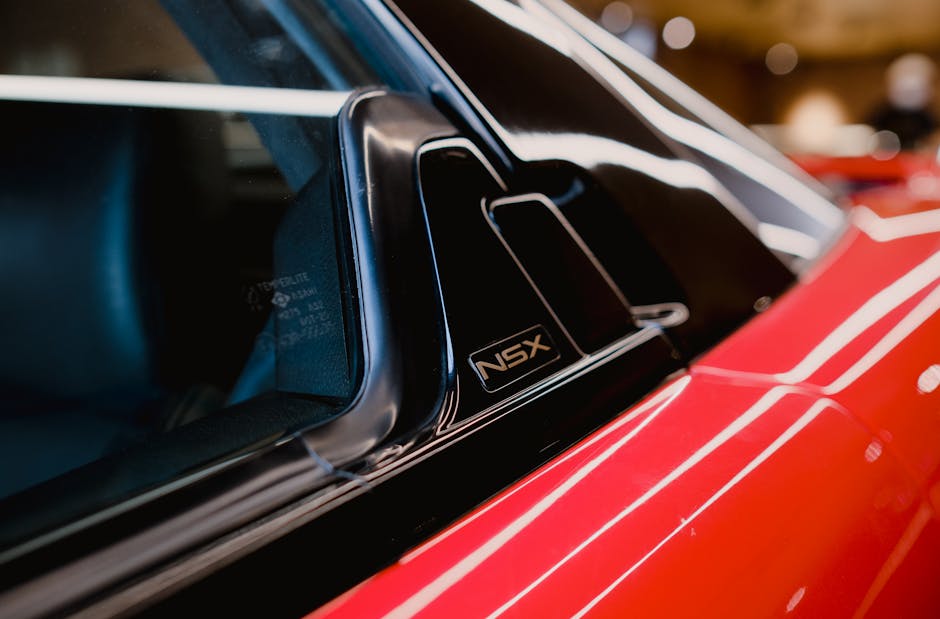 Swipe for more categories
Swipe for more categories 
Did You Know Facts About The First Car
Warning: Undefined variable $post_id in /var/www/dsw/wp-content/themes/DriveSmart_2024_v1.1/single.php on line 27
June 28, 2023
Warning: Undefined variable $post_id in /var/www/dsw/wp-content/themes/DriveSmart_2024_v1.1/single.php on line 75
Did You Know Facts About The First Car
Warning: Undefined variable $post_id in /var/www/dsw/wp-content/themes/DriveSmart_2024_v1.1/single.php on line 76
June 28, 2023
If you think about it, automobiles have changed the world in unimaginable ways. Transforming from horse-drawn carriages to battery-powered hypercars, it’s been a fascinating journey. However, none of this would have been possible without the invention of the very first automobile.
Do you ever wonder about it? Who was the genius behind it? What made it special? To get an insight into this revolutionizing innovation, let’s take a trip down memory lane. Buckle your seat belt, as we are about to explore some exciting aspects of the first automobile ever invented.
This brief journey will not only satiate your curiosity, but also create a deeper appreciation for the technology you use every day.
Basic Specifications: Exploring the specifications of the first car, including speed, power, and capacity.

Let’s delve into the specifics of the first-ever car. Often referred to as the “Benz Patent-Motorwagen,” it was developed by Karl Benz in 1885. Featuring a rear-mounted single-cylinder four-stroke engine, this was nothing like the powerhouses we see in modern vehicles. It had a power output of approximately 0.75 horsepower, and it was capable of reaching a maximum speed of 16 km/h (10 mph) – a far cry from today’s speed limits.
But what about capacity? This pioneering automobile only had room to fit two people. The driver sat in the front while the passenger sat behind. There were no seatbelts nor airbags, just a simple bench-style seat. This initial design laid the groundwork for future innovations in the automotive industry.
The First Journey: Revelation of where and when the car’s first journey took place and the outcomes of this historical event.
The dawn of motoring started with the first long-distance journey, an 1888 summer road trip from Mannheim to Pforzheim, Germany. Pioneered by Bertha Benz, the wife of car inventor Karl Benz, this 66-mile event showcased the practicability of the first patented motor vehicle to the world.
The journey was not planned – Bertha undertook it with her two teenage sons without informing her husband. The trip did not merely reveal the car’s mobility innovations, but it also led to several mechanical improvisations like the invention of brake linings.
This unexpected journey forever changed the perception of automobiles, highlighting that cars could be more than mere engineering experiments. These advancements sparked interest in the motor industry and triggered the evolution of modern-day transport. Today, every car on the road owes a debt to that groundbreaking journey.
The Role of Benz’s Wife: Disclosing the significant role of Bertha Benz, wife of inventor Karl Benz, in the success of the first car.

Bertha Benz, wife of the famous inventor Karl Benz, played an integral role in the success of the first car.
Often overlooked in history, Bertha was not only a supportive partner to Karl, but also his avid collaborator. It was she who financed the development of the Benz Patent-Motorwagen.
But her contribution extended beyond finance. In 1888, without informing her husband, she took her two sons on a 66-mile journey in the newly created car. The endeavor served a dual purpose.
Firstly, it demonstrated the practicality of motor vehicles, effectively initiating long-distance automobile travel. Secondly, throughout the journey, she made several mechanical improvements, like inventing brake pads.
This historic trip, dubbed as the world’s first real drive, generated the much-needed publicity for the Benz’s invention.
The Evolution in Design: Understanding the transformation from the first car’s initial three-wheel design to the typical four-wheel designs we see today.

The first automobile, invented by Karl Benz in 1885, raised eyebrows with its three-wheel design. This was a far cry from modern sleek vehicles, but it signified the onset of a revolutionary era.
Fast forward to 1886, Gottlieb Daimler presented the world with a four-wheeled carriage. This fundamental design was a stark contrast to Benz’s three-wheeler. The quadruple wheel structure provided more balance, enhancing the vehicle’s overall performance and safety.
With each passing decade, this design has evolved, resulting in profound improvements in aerodynamics, weight distribution, and aesthetics. The look of our cars has morphed as inventors and manufacturers learned new ways to marry functionality with elegance.
However, despite the sea of changes and advancements, the basic principle of the four-wheel structure remains ingrained in the fabric of automobile design. Today, it continues to dominate the landscape of global motor vehicle production.
Pricing and Affordability: Discussing the cost of the first automobile and its affordability in comparison to today’s standards.

When Karl Benz invented the Patent-Motorwagen in 1885, it was anything but affordable. Priced at $1,000 back then, in today’s dollars that equates to nearly $26,000. To put it in perspective, that is the average price of mid-range sedan today.
However, at the time, only the upper echelons of society could afford such a luxury. They were not items for the average household, unlike today where cars are a staple of modern life.
The first mass-produced car, Henry Ford’s Model T, changed that. Released in 1908, it was priced at a more affordable $825. With greater accessibility, the car started to become a household item and not just the preserve of the wealthy. Over a century later, this financial democratization continues to echo in the automobile industry.
The Dawn of Race Cars: Unveiling how the first car redefined the concept of speed and laid foundation for today’s worldwide racing competitions.

In the late 19th century, the concept of speed dramatically shifted with the emergence of the first automobile. This revolutionary invention presented an entirely new way of transit, toppling the reigning horse-drawn carriages, and later, paving the path for international racing competitions.
The first car defined high-speed transit with its whopping 16 km per hour capability. It wasn’t just about this comparatively high-speed transportation, but also about the newfound ability to control and manipulate this speed. This crucial aspect laid the groundwork for the later development of race cars and motorsports, evolving into a global phenomenon.
Today, the world of racing is a captivating blend of technique, technology, and adrenaline, all rooted in that first car’s audacious redefinition of speed.
Impact on Economy and Jobs: Assessing how the invention of the first car revolutionized industry and employment.

The invention of the first car brought about monumental changes in the world economy and job sector. Suddenly, the demand for steel, rubber, and glass surged, bolstering manufacturing industries substantially. New jobs were created not just in car production but also in supporting sectors like road construction and maintenance, fuelling stations, and car sales.
As cars became more affordable and widespread, regional economies further benefited from increased mobility, people could travel further to work, businesses could reach a bigger market, and even tourism thrived. This increased vibrancy in the job market and broadened the nation’s tax base, bringing immense benefits to the economy.
Indeed, the first car was more than just a mode of transport – it was a catalyst for economic transformation and a significant milestone in human progress.
The Advent of Mass Production: Analyzing how the concept of mass production initiated with the first car’s success.

Visionary mechanic Henry Ford perfected the first Model T in his Piquette Avenue factory in 1908. This ‘Tin Lizzie’ revolutionized personal transportation and was a commercial breakthrough.
But it was Ford’s introduction of mass production, implemented through the moving assembly line, that truly changed the world. Unlike the car itself, the assembly line wasn’t an entirely Ford idea; it was a concept evolved from the practices of the meatpacking industry.
Ford’s integration of the assembly line into car production was paramount to the affordability and success of the Model T. The time needed to assemble a car plummeted from 12 hours to about 90 minutes. This led to increased efficiency, lower costs, and higher profits.
Thus, the success of the first car can largely be attributed to the advent of mass production. It was a pivotal moment in industrial history that continues to shape our modern world.
"> /var/www/dsw/wp-content/themes/DriveSmart_2024_v1.1/single.php on line 177
">
"> /var/www/dsw/wp-content/themes/DriveSmart_2024_v1.1/includes/quote-modal.php on line 8
">


